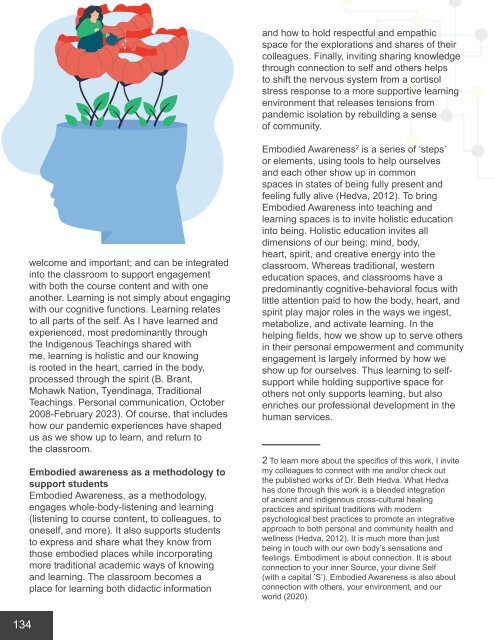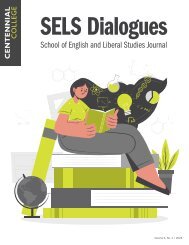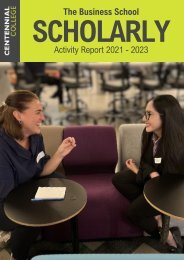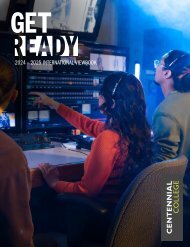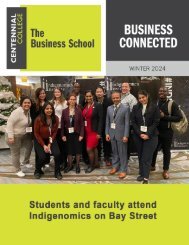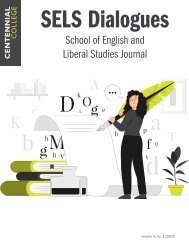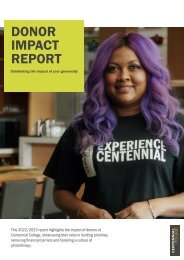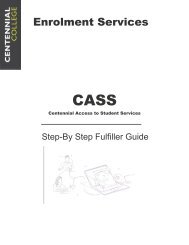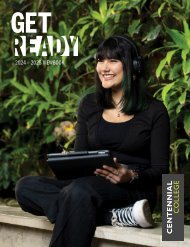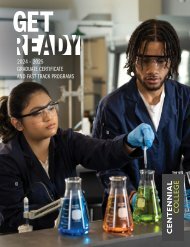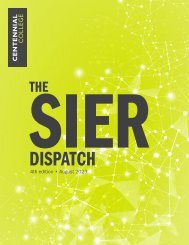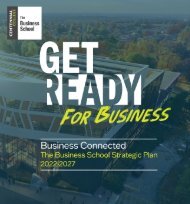The Teaching and Learning Innovation Digest - May 2023
Welcome to a truly special edition of the Teaching and Learning Innovation Digest! Our seventh annual academic publication has assumed an incredibly meaningful shape and form for a number of reasons. Not only did we receive an enthusiastic response with over 30 submissions via our institutional broadcast, but we also have consciously and intentionally embraced the principles of Universal Design for Learning by attempting to represent and celebrate the varied forms of expressions therein. From reflective essays, poetry, visual and performing arts, podcasts, video conversations to scholarly work, academic and applied research, news and updates, and interviews, this is truly a power-packed publication!
Welcome to a truly special edition of the Teaching and Learning Innovation Digest! Our seventh annual academic publication has assumed an incredibly meaningful shape and form for a number of reasons. Not only did we receive an enthusiastic response with over 30 submissions via our institutional broadcast, but we also have consciously and intentionally embraced the principles of Universal Design for Learning by attempting to represent and celebrate the varied forms of expressions therein. From reflective essays, poetry, visual and performing arts, podcasts, video conversations to scholarly work, academic and applied research, news and updates, and interviews, this is truly a power-packed publication!
You also want an ePaper? Increase the reach of your titles
YUMPU automatically turns print PDFs into web optimized ePapers that Google loves.
welcome <strong>and</strong> important; <strong>and</strong> can be integrated<br />
into the classroom to support engagement<br />
with both the course content <strong>and</strong> with one<br />
another. <strong>Learning</strong> is not simply about engaging<br />
with our cognitive functions. <strong>Learning</strong> relates<br />
to all parts of the self. As I have learned <strong>and</strong><br />
experienced, most predominantly through<br />
the Indigenous <strong>Teaching</strong>s shared with<br />
me, learning is holistic <strong>and</strong> our knowing<br />
is rooted in the heart, carried in the body,<br />
processed through the spirit (B. Brant,<br />
Mohawk Nation, Tyendinaga, Traditional<br />
<strong>Teaching</strong>s. Personal communication, October<br />
2008-February <strong>2023</strong>). Of course, that includes<br />
how our p<strong>and</strong>emic experiences have shaped<br />
us as we show up to learn, <strong>and</strong> return to<br />
the classroom.<br />
Embodied awareness as a methodology to<br />
support students<br />
Embodied Awareness, as a methodology,<br />
engages whole-body-listening <strong>and</strong> learning<br />
(listening to course content, to colleagues, to<br />
oneself, <strong>and</strong> more). It also supports students<br />
to express <strong>and</strong> share what they know from<br />
those embodied places while incorporating<br />
more traditional academic ways of knowing<br />
<strong>and</strong> learning. <strong>The</strong> classroom becomes a<br />
place for learning both didactic information<br />
<strong>and</strong> how to hold respectful <strong>and</strong> empathic<br />
space for the explorations <strong>and</strong> shares of their<br />
colleagues. Finally, inviting sharing knowledge<br />
through connection to self <strong>and</strong> others helps<br />
to shift the nervous system from a cortisol<br />
stress response to a more supportive learning<br />
environment that releases tensions from<br />
p<strong>and</strong>emic isolation by rebuilding a sense<br />
of community.<br />
Embodied Awareness 2 is a series of ‘steps’<br />
or elements, using tools to help ourselves<br />
<strong>and</strong> each other show up in common<br />
spaces in states of being fully present <strong>and</strong><br />
feeling fully alive (Hedva, 2012). To bring<br />
Embodied Awareness into teaching <strong>and</strong><br />
learning spaces is to invite holistic education<br />
into being. Holistic education invites all<br />
dimensions of our being: mind, body,<br />
heart, spirit, <strong>and</strong> creative energy into the<br />
classroom. Whereas traditional, western<br />
education spaces, <strong>and</strong> classrooms have a<br />
predominantly cognitive-behavioral focus with<br />
little attention paid to how the body, heart, <strong>and</strong><br />
spirit play major roles in the ways we ingest,<br />
metabolize, <strong>and</strong> activate learning. In the<br />
helping fields, how we show up to serve others<br />
in their personal empowerment <strong>and</strong> community<br />
engagement is largely informed by how we<br />
show up for ourselves. Thus learning to selfsupport<br />
while holding supportive space for<br />
others not only supports learning, but also<br />
enriches our professional development in the<br />
human services.<br />
2 To learn more about the specifics of this work, I invite<br />
my colleagues to connect with me <strong>and</strong>/or check out<br />
the published works of Dr. Beth Hedva. What Hedva<br />
has done through this work is a blended integration<br />
of ancient <strong>and</strong> indigenous cross-cultural healing<br />
practices <strong>and</strong> spiritual traditions with modern<br />
psychological best practices to promote an integrative<br />
approach to both personal <strong>and</strong> community health <strong>and</strong><br />
wellness (Hedva, 2012). It is much more than just<br />
being in touch with our own body’s sensations <strong>and</strong><br />
feelings. Embodiment is about connection. It is about<br />
connection to your inner Source, your divine Self<br />
(with a capital ’S‛). Embodied Awareness is also about<br />
connection with others, your environment, <strong>and</strong> our<br />
world (2020).<br />
<strong>The</strong>re are five elements or ‘steps’ to Embodied Awareness as a pedagogical approach to classroom<br />
facilitation: connection, observation, listening, engagement, empowerment.<br />
CONNECT<br />
OBSERVE<br />
LISTEN<br />
ENGAGE<br />
EMPOWER<br />
Five Elements of Embodied Awareness as a Facilitation Method for Course Integration<br />
Connect within: to self <strong>and</strong><br />
personal spiritual resources or<br />
personal belief system through an<br />
embodied experience<br />
Connect with other(s): energetically<br />
<strong>and</strong> with respect to course content of<br />
the day<br />
Use of mental/cognitive information,<br />
analysis, <strong>and</strong> awareness<br />
Opportunity to practice deep listening<br />
Opportunity for students to take stock<br />
of course content <strong>and</strong> synthesize<br />
information by sensing into emotions,<br />
thoughts, beliefs, subtle intuitive<br />
senses to inspire new perspectives<br />
<strong>and</strong> insights into course content<br />
through experiential process:<br />
expressive arts, self-reflection,<br />
<strong>and</strong>/or discussion relating to the<br />
topical content utilizing classroom<br />
community engagement of content<br />
Reflection on strengths-based<br />
components of the learning.<br />
What aspect of the day’s course<br />
content has ignited a sense of<br />
agency or action to be taken?<br />
What can be done with this<br />
learning experience?<br />
Examples:<br />
• Breath Work, Body movement, Body Tapping, Artistic<br />
expression, Connection to Music, song, Smudging.<br />
• Cultural ceremony; prayer; meditation (facilitated by<br />
instructor, volunteers, class members from different<br />
cultural backgrounds).<br />
Examples:<br />
• Pairs or small-group shares, Movement activities, Ice breaker<br />
activities related to content.<br />
• Reflections on the homework or content of previous class.<br />
• Kahoot content review.<br />
Examples:<br />
• Delivery of course content.<br />
• Offering a range of cognitive options with respect to course<br />
content connections (ie. integration of UDL strategies of<br />
<strong>Teaching</strong> <strong>and</strong> <strong>Learning</strong>).<br />
• Use of self-assessment instruments.<br />
Examples:<br />
• Students have the opportunity to listen to each other express<br />
their unique engagements with course content within small<br />
groups or the larger classroom community.<br />
• To deepen listening consider providing a ‘vocabulary of<br />
feelings’ to name <strong>and</strong> process emotional experiences evoked.<br />
Examples:<br />
• Body scanning activities to acknowledge where the learning<br />
experiences registers within the body.<br />
• Guided Image techniques to engage perception of inner<br />
impressions (gut feelings, sensing temperature or texture,<br />
visualization of images, colors or symbols, inner listening) to<br />
connect with energy in the body.<br />
• Exp<strong>and</strong> sensory awareness into embodied awareness, by<br />
engaging intuitive insights, creativity, inspire creative projects<br />
to help students integrate course content.<br />
• Movement activities to release, move, <strong>and</strong> play with energetic<br />
experiences in the body.<br />
Examples:<br />
• Share a word of Empowerment related to the day’s content.<br />
• Name a new learning.<br />
• Describe some new action that can be taken to move the<br />
learning into the world of personal/professional experience.<br />
• Reflect on some aspect of the learning that student can teach<br />
to another person in their life <strong>and</strong> who <strong>and</strong> why them.<br />
• Identify a “take-away” of white board as you leave<br />
the classroom.<br />
<strong>The</strong> above chart displays examples of what applying the five elements of Embodied Awareness can<br />
look like within the classroom. <strong>The</strong> order to how these elements are integrated is not as important as<br />
all five being included in any given class/lesson. That being said, it is best practice to at least start<br />
134<br />
135


